I don’t have a sprawling orchard, just some favourite fruit bushes in my yard. Annually, I give myself a little bit refresher on when and easy methods to prune fruit bushes earlier than I begin. Pruning deciduous fruit bushes can appear intimidating, however right here’s the excellent news: even an imperfect pruning job is best than skipping it solely. The extra you follow, the higher you’ll get, and fruit bushes depend on us for this vital step. Left to their very own gadgets, they develop wild, producing plenty of small fruit. Slightly effort in your half retains them wholesome, productive, and manageable.
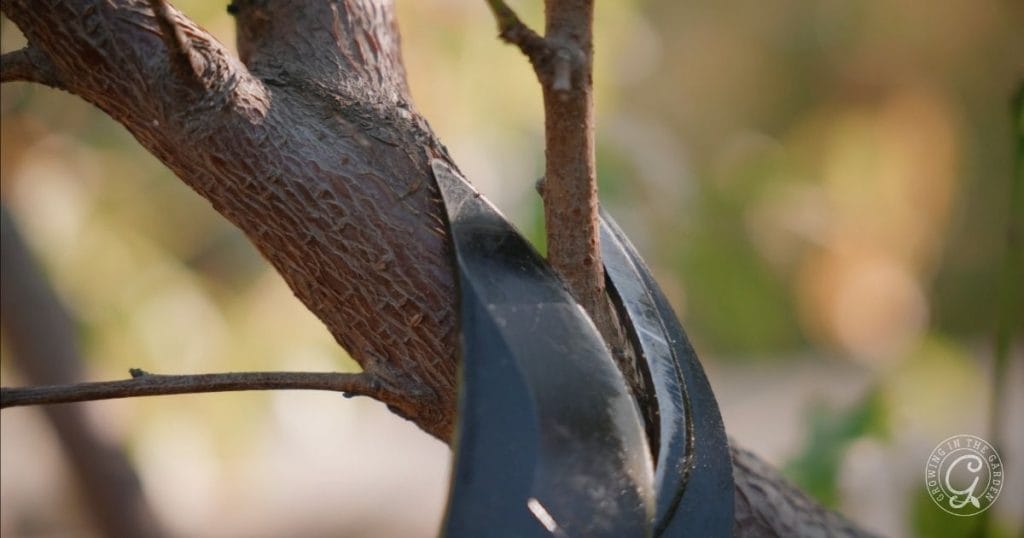
Use the rules on this publish to information you. In case you can work alongside an skilled good friend or neighbor as they prune their fruit bushes, that’s even higher—it’s a good way to achieve confidence and study by doing. Whether or not your tree is younger or a mature producer, good pruning makes all of the distinction, providing you with more healthy bushes, simpler harvests, and plentiful, massive, scrumptious fruit.
Article Index
When to Prune Fruit Timber
Timing is the whole lot in terms of pruning fruit bushes. For deciduous bushes like peaches, plums, and apples, the perfect time to prune is throughout the dormant season in winter. That is when the tree’s progress slows down, making it simpler to see the construction and make considerate cuts with out inflicting pointless stress. In most areas, pruning is completed after the leaves have fallen and earlier than the primary buds start to swell in spring. This encourages wholesome new progress and units the stage for a productive season.
Pruning might must occur sooner within the low desert, the place winters are gentle and the dormant interval will be quick. Purpose to prune deciduous bushes earlier than the primary buds break, even when some leaves haven’t fallen but. That is usually in January or on the newest, in February. Ready too lengthy can intervene with spring progress and scale back fruit manufacturing.
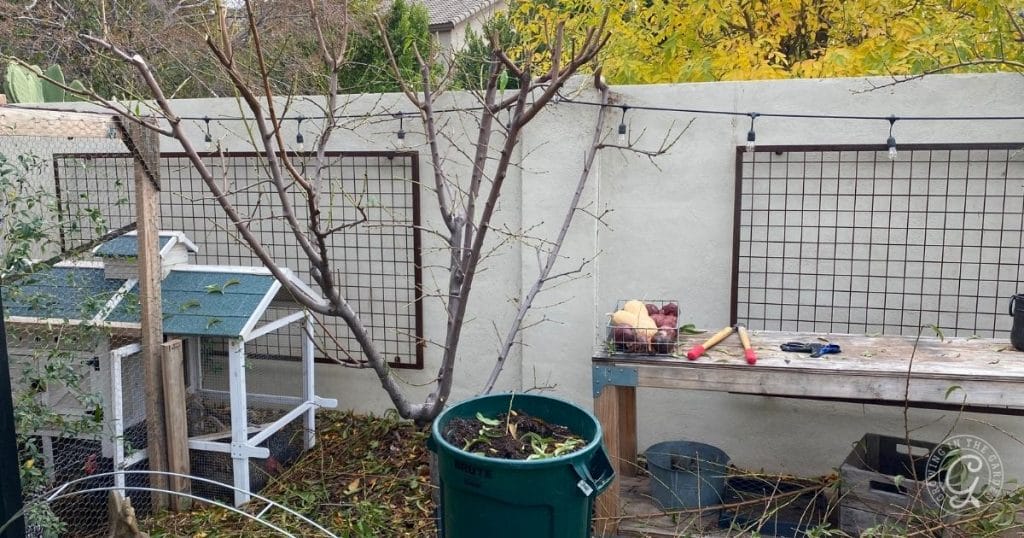

Pruning will also be executed in the summertime to assist management the scale of deciduous fruit bushes or take away undesirable water sprouts and suckers. Study extra about easy methods to establish and take care of suckers on this information.
For citrus bushes—resembling oranges, lemons, and grapefruits—pruning is greatest executed after the final frost in late winter or early spring. As a result of citrus bushes don’t go absolutely dormant, give attention to eradicating useless or broken branches and gently shaping the tree because it prepares for lively progress. Citrus bushes don’t require pruning like deciduous fruit bushes do. Learn this information to study extra about easy methods to develop citrus.
Utilizing the correct instruments makes pruning simpler, safer, and simpler. Right here’s what you might want:
- Hand Pruners: Excellent for small branches and exact cuts. Search for bypass pruners for a clear, shut reduce. Don’t use anvil pruners on dwell wooden. Advisable: Felco Hand Pruners
- Lescers: These long-handled pruners are perfect for thicker branches (as much as 1–2 inches in diameter) and hard-to-reach areas. Advisable: Corona Bypass Lopers
- Pruning Noticed: Use a pruning noticed for giant branches which are too thick for loppers. Select one with a pointy, curved blade for easy reducing. Advisable: Corona Folding Noticed
- Pole Pruners: Pole pruners allow you to attain greater branches with out climbing. Make sure the pole is sturdy and adjustable. Advisable: Dock pole noticed
- Device Upkeep Provides: Preserve instruments sharp and clear to make cuts simpler and scale back the chance of spreading illness. A ten% bleach resolution or rubbing alcohol is useful for disinfecting blades between cuts. Advisable: Corona Blade Sharpener
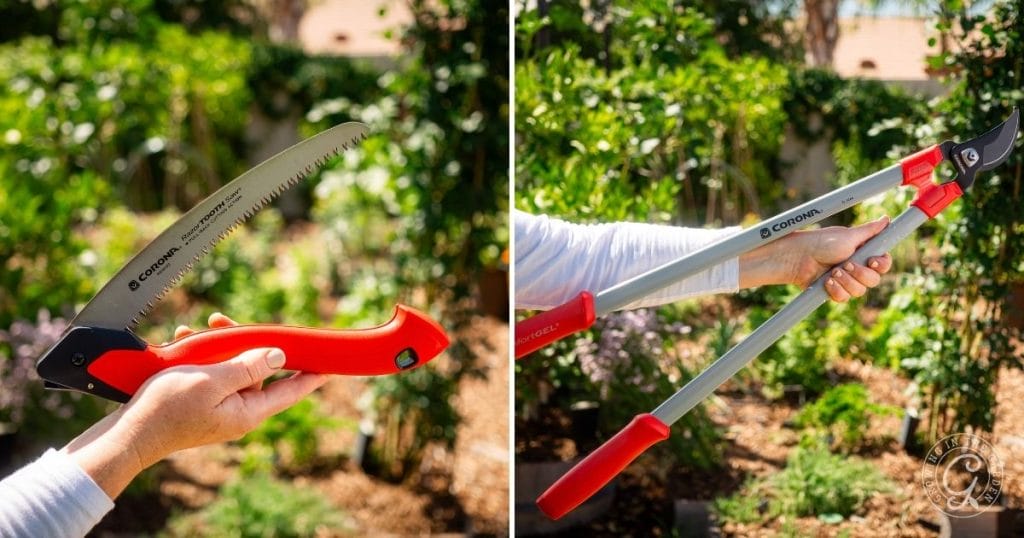

Pruning Fundamentals: Understanding the Phrases
Earlier than you begin pruning, it’s useful to grasp a couple of key phrases and methods.
The place to Reduce: The Department Collar
The department collar is the marginally swollen space on the department’s base the place it connects to the trunk or a bigger limb. That is the tree’s pure therapeutic zone, so all the time make your cuts simply exterior the department collar. Slicing too near the trunk can injury the tree, whereas leaving a stub can sluggish therapeutic and invite pests or illnesses.
Thinning Cuts
Thinning cuts take away a whole department again to its level of origin (both the trunk or one other department). These cuts are used to:
- Enhance airflow and light-weight penetration within the cover.
- Take away crossing, weak, or overcrowded branches.
- Keep the tree’s total form and forestall overgrowth.
Thinning cuts can be utilized throughout dormant or summer time pruning. One of these reduce is much less stimulating and received’t encourage extreme regrowth, making it supreme for structural pruning.


Heading Cuts
Heading cuts shorten a department or shoot to a particular level, encouraging new progress just under the reduce. One of these pruning:
- Stimulates bushier progress and encourages branching.
- Is used at planting time to create leaf sprouts that change into scaffold branches.
- Is used to handle the scale and form of the tree.
- Promotes fruiting on new wooden (necessary for bushes like peaches that bear fruit on final 12 months’s progress).
Heading cuts are simplest when used sparingly throughout the dormant season. Overuse can result in extreme, weak progress that requires extra thinning later.
When to Use Every Sort of Reduce
- Dormant Season (Winter): Concentrate on thinning cuts to take away useless, diseased, or poorly positioned branches. Use heading cuts to form younger bushes and encourage branching.
- After the Final Frost (Citrus Timber): Use thinning cuts to scrub up useless or broken wooden. Apply heading cuts provided that wanted for shaping.
- Summer season (Gentle Pruning): Take away water sprouts, suckers, or overly vigorous shoots with thinning cuts. Heading cuts can be utilized to manage dimension and form however needs to be minimal to keep away from stressing the tree.
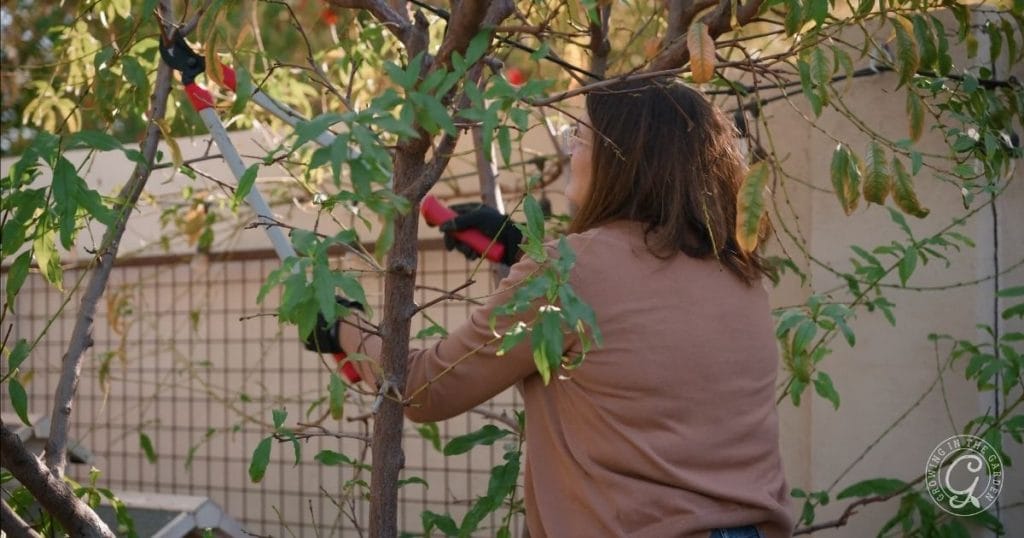

Find out how to Prune Younger Deciduous Fruit Timber (Years 1–3)
Pruning newly planted fruit bushes is important for setting a powerful framework and balancing root and shoot progress. It ensures the tree develops well-spaced, sturdy branches able to supporting fruit sooner or later. Early pruning additionally removes weak or poorly positioned branches and encourages wholesome new progress, making it simpler to form the tree for long-term success. This small step lays the inspiration for a productive, wholesome tree.
Proper After Planting
- Reduce the tree down by ⅔ to 18-24 inches (45-60 cm)(about knee top). Make a clear reduce at a forty five° angle simply above a bud. Guarantee there are a number of buds under the reduce and above the graft (the place the tree is grafted onto the rootstock).
- In case your sapling already has a couple of brancheschoose three or 4 well-spaced (4–6 inches aside on the trunk) and type angles better than 45° with the trunk. Take away all others.
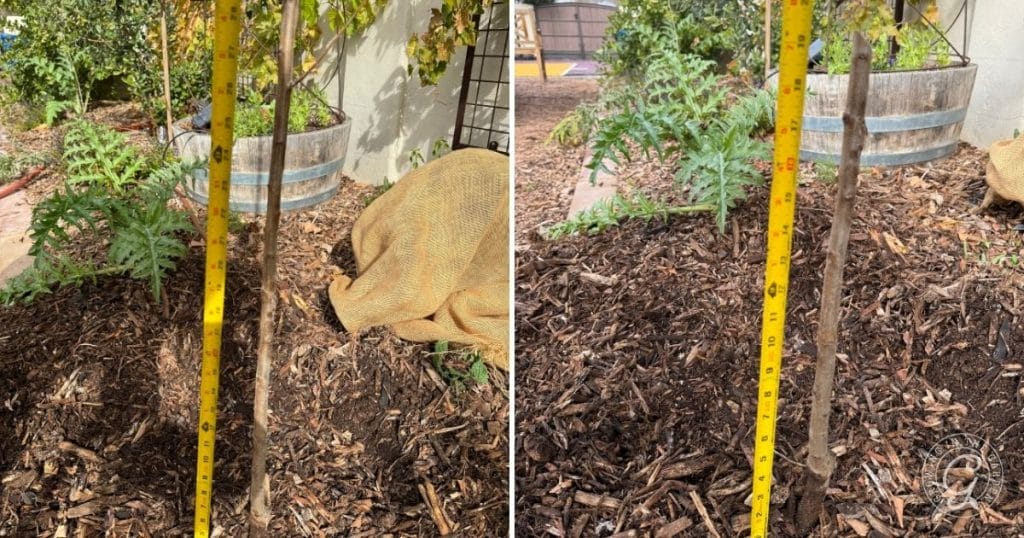

Open-Heart (Vase) Form
This form removes the central chief, leaving 3–5 important branches fanned out to create an open middle. It permits daylight and airflow to achieve the whole cover, which helps stop illness and promotes fruit ripening—generally used for peaches, plums, apricots, and nectarines.
- Think about the completed form as a vase: open within the middle, permitting mild and airflow. This helps stop illness and produces higher-quality fruit.
- Trim away any branches pointing inward towards the trunk or crossing each other. You wish to maintain the cover open and balanced.
Central Chief
This form retains a single, upright important trunk with evenly spaced branches radiating outward. It supplies a powerful construction and is right for bushes that naturally develop tall, resembling apples, pears, and cherries.
- Choose the strongest, straightest shoot because the central chief and take away competing vertical branches. Preserve 4–6 evenly spaced lateral branches across the trunk, guaranteeing they type huge angles (45–60°) for power.
- Annually, shorten the lateral branches to keep up steadiness and encourage upward progress of the chief whereas eradicating any branches that crowd the middle or develop downward.
Yr-by-Yr Coaching
- Within the first few yearsproceed to take away weak or poorly angled branches.
- Preserve the trunk freed from suckers (shoots that come from the bottom or roots) and take away water sprouts (shoots that develop straight up from older branches).
Pruning Established or Mature Deciduous Fruit Timber
Prune Yearly
- Skipping a 12 months makes the subsequent pruning session tougher. Annual pruning helps preserve a manageable top and prevents overcrowding.
Take away Drawback Wooden
- All the time take out useless, dying, or diseased wooden. Make your reduce under the contaminated space into wholesome tissue, and disinfect your instruments (a ten% bleach resolution works nicely) to keep away from spreading illness.
- Remove any branches that contact or cross one another. Considered one of them should go so neither is broken.
- If two branches run parallel, think about how they may develop. The higher limb will finally shade the decrease one. Determine which is best for the tree’s form and well being, then take away the opposite.
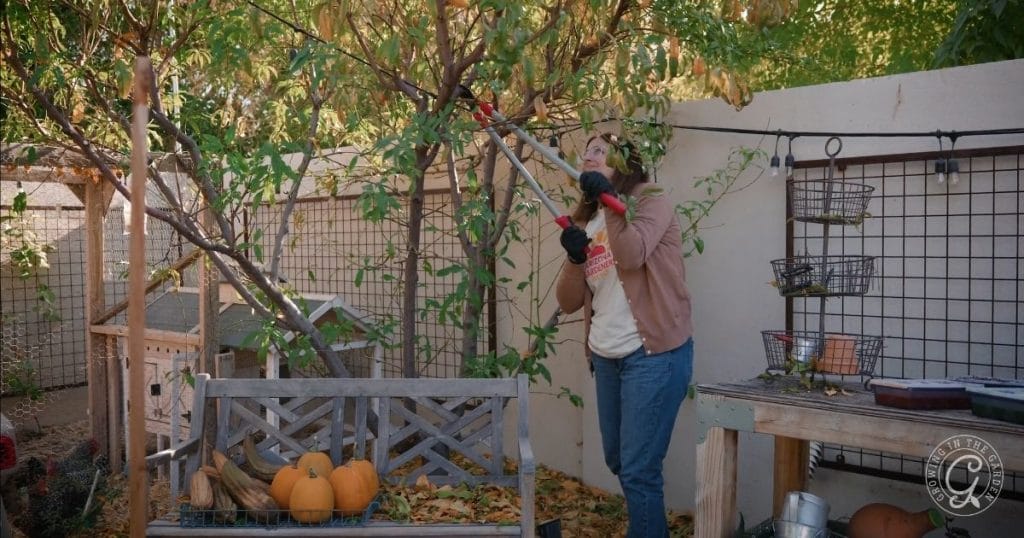

Keep an Open Heart or Central Chief
For an open middle (vase form), take away any shoots rising inward towards the trunk to keep up an ethereal, open form that enables daylight and air to flow into freely. Trim the guidelines of final 12 months’s progress to a top appropriate for harvesting, stimulating new shoots for the approaching season.
For a central chief, give attention to protecting a single, upright trunk as the principle chief. Take away any competing vertical shoots and guarantee lateral branches are evenly spaced across the trunk, forming huge angles (45–60°) for power. Trim again lateral branches barely to encourage balanced progress whereas eradicating any that develop inward, downward, or crowd the cover.
Suckers and Water Sprouts
- Suckers develop from the rootstock and rob power from fruit manufacturing. Take away them as quickly as they seem.
- Water sprouts shoot straight up from older branches. Pull or reduce them off early to maintain your tree’s cover open and formed.
Massive or Overgrown Timber
- By no means take away greater than one-third of the tree’s branches in a single 12 months.
- Focus first on the worst offenders—branches that cross or rub, have grown too tall, or crowd the middle.
- Step again sometimes to see the tree’s total form earlier than making extra cuts. Proceed eradicating suckers, water sprouts, and ideas of fruiting branches to the specified top.
Ultimate Ideas
- Fruit Tree Choice: Timber suited to your area’s chill hours, temperature extremes, and rainfall will develop with much less effort, whereas poorly chosen bushes might battle, require additional care, and produce little fruit. See fruit bushes fitted to the low desert on this fruit planting information.
- Correct Planting: Correct planting ensures the tree establishes a powerful root system and avoids widespread points like poor drainage or unstable progress. Learn to plant fruit bushes on this information.
- No Pruning Paint: Analysis reveals that wound dressings or pruning paints can lure moisture and pathogens, doing extra hurt than good. In dry climates, uncovered cuts heal greatest within the open air.
- Form and Look: Preserve the ultimate form (open middle or central chief) in thoughts as you prune. A well-pruned fruit tree is productive and a ravishing addition to your yard.
- Yr-Spherical Consideration: Most pruning takes place throughout the dormant season (winter), however maintain a watch out for suckers, water sprouts, or crossing branches throughout the rising season.
- Skinny Remaining Fruit: Thinning reduces the variety of fruits, permitting the tree to pay attention its assets on the remaining ones. The outcome? Bigger, juicier, and extra flavorful fruit. Study extra about thinning fruit bushes on this information.
- Publish-Pruning Care: Correct watering and mulching assist your tree recuperate after pruning. Water deeply to cut back stress and assist new progress, particularly if pruning was in depth. Apply a layer of mulch across the base of the tree (protecting it a couple of inches away from the trunk) to retain moisture, regulate soil temperature, and suppress weeds.
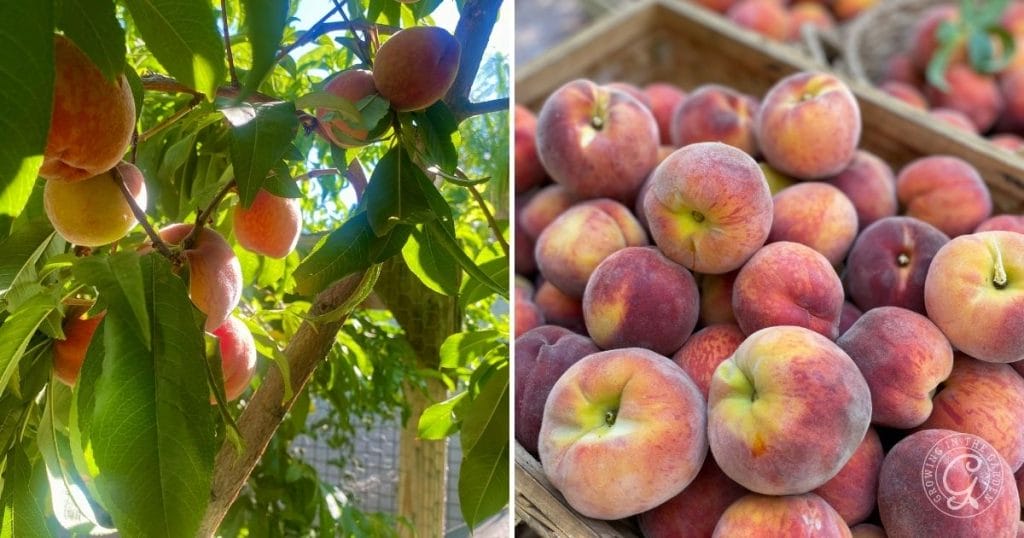

Bear in mind, pruning is a talent realized with follow; even imperfect pruning is best than none! Over time, you’ll see how a little bit pruning annually results in lovely, wholesome bushes that add magnificence to your backyard and reward you with candy, scrumptious fruit.
